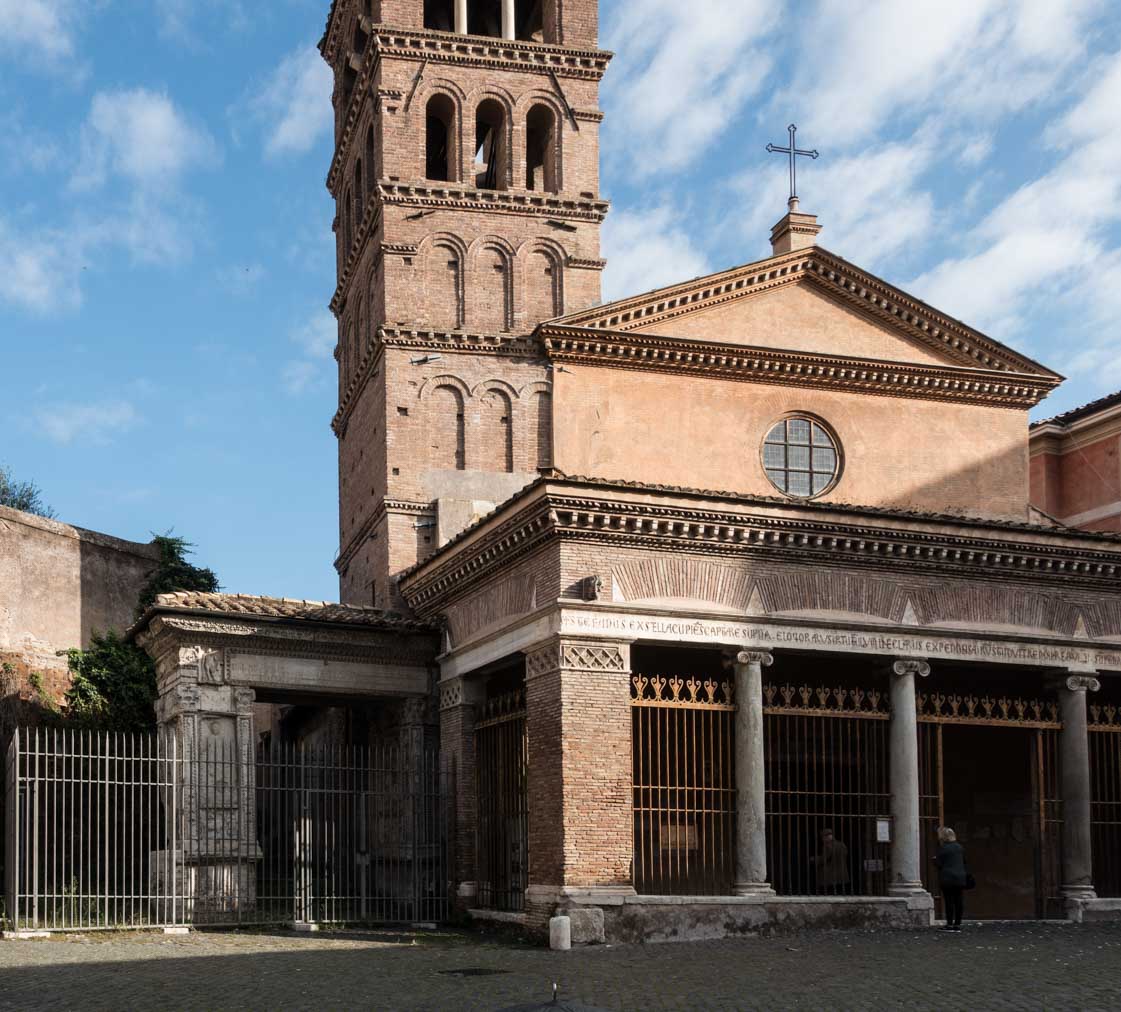
BUDOWLE & OBIEKTY Commemorative monuments
The Arch of the Silversmiths – a place of memory erased

This structure (in Latin Arcus Argentariorum) in its form is nothing like the triumphant arches we know – it does not have a semi-circular vault but a simple entablature set on two supports covered with marble slabs decorated with reliefs. Apart from that, during the early Middle Ages, it was built into the portico of the Church of San Giorgio in Velabro, which makes it seem like it is its integral part. For this reason it is a building, to which tourists generally do not pay any attention. It is barely visible due to the level of the ground which has been rising for centuries, however along with the Arch of Septimius Severus in constitutes an excellent example of the art of the Severus dynasty.
It was built in a very significant place in the history of Rome – at Forum Boarium, in the year 204 in order to honor Emperor Septimius Severus and his family. It was most likely to constitute one of the gates leading to the aforementioned forum. Its founders were the bankers and merchants active there. It was not therefore, an official monument commissioned by the Senate, but a private initiative of a group of entrepreneurs, desiring in this way to express their gratitude to the emperor. For what? We do not know for sure, but it can be assumed that due to laws and resolutions which benefited them.
The reliefs on the inner side of the arch, surrounded by ornamental reliefs are still well visible, depicting the imperial family at the moment of making sacrificial offerings. On the architrave there are free-standing figures of the members of the imperial family: Septimius Severus, his wife Julia Domna and their two sons – Caracalla and Geta as well as the wife of the first-born Caracalla, Publia Fulvia Plautilla. The inscriptions engraved on the arch confirm the names of the imperial family, although some of them were simply removed during the reign of Emperor Caracalla – this pertains to the names of his brother Geta, his wife Pluatilla and his father-in-law Plautianus, who were first brutally murdered by Caracalla, then condemned to eternal damnation. This procedure – damnatio memoriae – taken over from the ancients, functioned very well in subsequent centuries and is still alive today, which we can see in Rome on multiple occasions when looking at modern and contemporary buildings and monuments.
Może zainteresuje Cię również
Triumphant Arch of Emperor Titus – a commemoration of triumph and defeat engraved in stone
Zgodnie z art. 13 ust. 1 i ust. 2 rozporządzenia Parlamentu Europejskiego i Rady (UE) 2016/679 z 27 kwietnia 2016 r. w sprawie ochrony osób fizycznych w związku z przetwarzaniem danych osobowych i w sprawie swobodnego przepływu takich danych oraz uchylenia dyrektywy 95/46/WE (RODO), informujemy, że Administratorem Pani/Pana danych osobowych jest firma: Econ-sk GmbH, Billbrookdeich 103, 22113 Hamburg, Niemcy
Przetwarzanie Pani/Pana danych osobowych będzie się odbywać na podstawie art. 6 RODO i w celu marketingowym Administrator powołuje się na prawnie uzasadniony interes, którym jest zbieranie danych statystycznych i analizowanie ruchu na stronie internetowej. Podanie danych osobowych na stronie internetowej http://roma-nonpertutti.com/ jest dobrowolne.